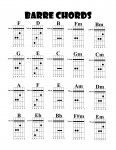The danger, of course, is in keeping it up long term. I have a few tools to do that.
It so happens, for example, that my wife things the guitar just looks cool, and is happy if I keep it in the living room. So, it will be staring me in the face most evenings.
Okay, so, let me see if i get the concept.
What you told me is
Code:
String 1: 2, 5, 7. 2, 5, 8, 7. 2, 5, 7, 5, 2
But it could be played:
Code:
String 1: 2, 5, -. 2, 5, -, -. 2, 5, -, 5, 2.
String 2: -, -, 2. -, -, 3, 2. -, -, 2, -, -.
Not that it would be convenient for the hand, necessarily, but that'd be the idea? Transpose the higher fret on the low string to the lower fret on the next higher string.
You could even transpose that String 1, 5th fret to a String 2, open, yes? Cluster the whole thing down at the head, with a 2, and an open, 2, 3.
This would also be a way to check relative tuning, if you have a good ear, by checking that the fretted lower string matches the open higher string. So, you might not be perfectly in tune, but at least the whole thing would be off by the same amount.
You're getting the idea. You've also clued in on how guitarists can tune a guitar without a tuner. When you know the next higher string is equal to the 5th fret of his predecessor, (5th on E = A), then you tune the 2 strings so they match. This is also how you check if your guitar is actually tuned correctly (remember intonation...)
Soon you should be reading up on Guitar Tab, but to give a quick example using the Smoke on the Water Riff:
Code:
6-------------------------------
5-------------------------------
4-------------------------------
3-------------------------------
2 -----0-2---0-3-2---0-2-0-2-
1 ---2-----2--------2----------
Hopefully I layed it out right and got the notes right, but this is the formal way to display how to play a riff. Very close to what you came up with. The 0 means play the string open (unfretted).
String 1 = E (the big fat string on the top)
string 2 = A
string 3 = D
string 4 = G
string 5 = B
string 6 = E
Another core lesson, which will eventually lead to music theory:
remember how that practice riff has you playing all 4 fingers on each string?
And how the 5th fret = the open note of the next higher string?
If you go all the way back to the list of the "notes", you'll see that the B is NOT 5 frets (half-steps) from G, it is 4. B breaks the rules. I suspect it is because if they made it C (because there's not B#), then the next string would be E#, and the point is to use whole notes.
this isn't rocket surgery, but I don't want to overload your brain with more stuff than you need. You are going to encounter these factoids later.
The key points:
learn how to read Guitar Tab (it's easier to share riffs and most examples online are Tab)
keep practicing that practice Riff
do that riff forwards and backwards (1234, 4321)
practice playing the riff evenly, even while changing strings
start learning some of the CAGED chords
The About lessons will get you to doing the blues scale which is a subset of that practice riff.
I will also give you Iron Man, because it rocks, and because you wife will think you are a prodigy if you learn a new song riff every day:
Code:
6) ------------------------------------------------
5) ------------------------------------------------
4) ------------------------------------------------
3) ------------------------------------------------
2) ------------------------------------------------
1) -2--5--5-7-7--9-10-9-10-9-10-7--7-5-5-2-
Notice how I used extra dashes to reflect shorter/longer notes. Also, I might not have done the right quantity of 9-10 repeats. practice it out to get the feel for it and fix it. or google up some Tab


